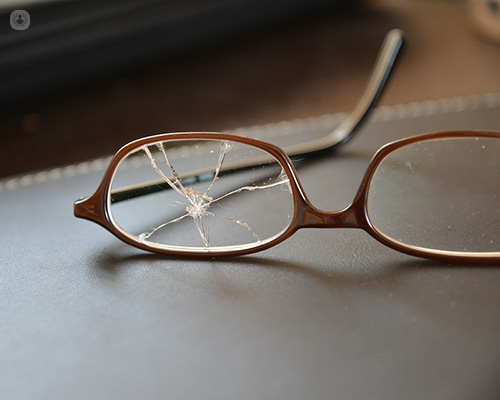Warning signs of retinal detachment
Escrito por:What is retinal detachment?
A retinal detachment is a serious sight-threatening eye condition but it can be treated successfully with surgery. The retina is the light-sensitive layer inside the eyeball that captures the visual world and passes the light signals to the brain along the optic nerve. Inside the eyeball, the vitreous gel is a transparent jelly-like structure that rests on the retina surface and fills the inside of the eyeball behind the natural lens.
From 30 years of age onwards, the vitreous jelly becomes more liquefied and this leads to eventual collapse of the vitreous gel inside the eyeball. This collapse of the vitreous is known as a posterior vitreous detachment (“PVD”). As the gel shrinks and collapses inside the eyeball the vitreous gel peels off the retinal surface. In areas of strong vitreous gel and retina attachment, the retina can tear. Fluid from the liquefied vitreous gel leaks through the retinal tear, and the retina starts to lift off and “detach.” This process of retinal detachment can be slow or can be very fast.

What symptoms should patients look out for?
Increased perception of floaters that appear as “cobwebs” “spiders” or “dots” that move across the visual world as the eye moves. This signifies the PVD, or a bleed in the eye if the retinal blood vessel is also torn.
Light flashes that can appear as “lightning strikes” arcs of light” or “like a lightbulb flashing on and off.” As the vitreous gel pulls on the retina, the eye sees a light phenomenon.
A shadow like a “curtain” or “dark patch” in the visual world indicates a retinal detachment. This shadow can appear from any direction, and is black or dark-coloured and fixed permanently in the vision.
The vision itself can be partially or completely lost, and covering the other unaffected eye usually checks this.
When is it time to see an optician?
Anyone with symptoms of retinal detachment needs to be seen urgently by a retina surgeon within 24 hours. The optician can assess the eye, and would then advise you to see a retina surgeon urgently.
Can retinal detachment be treated on-site?
Mr Muqit is able to provide same-day emergency surgery for anyone with a retinal detachment. Surgery is performed usually with local anaesthesia and sedation to relax the patient. In some cases, the patients require to be asleep for surgery with a general anaesthetic. The operation is a daycase procedure with no overnight stay required.
How fast will patients notice improvement?
An operation (vitrectomy) is the most common surgery performed to fix a retinal detachment. A gas bubble is used, and patients are unable to fly for between three and eight weeks. After the gas has disappeared, the success of the operation can be established. In some patients, a bubble of oil is used instead of the gas, and patients can usually fly after 2 weeks following the operation with oil. In some patients, a silicone strapping known as a buckle” is placed on the eyeball, and this can fix the retinal detachment. There are no flying restrictions with buckle surgery.
In your view, how has retinal detachment treatment advanced in recent years?
The vitrectomy surgery has advanced to suture-less “no sutures required”, micro-keyhole “self-sealing microinscional” surgery. This means that the eye is not painful after surgery, and the eye heals rapidly within 10 days following the operation. The success rate of retinal detachment is between 85-95% and this depends on the original type and severity of the retinal detachment.


